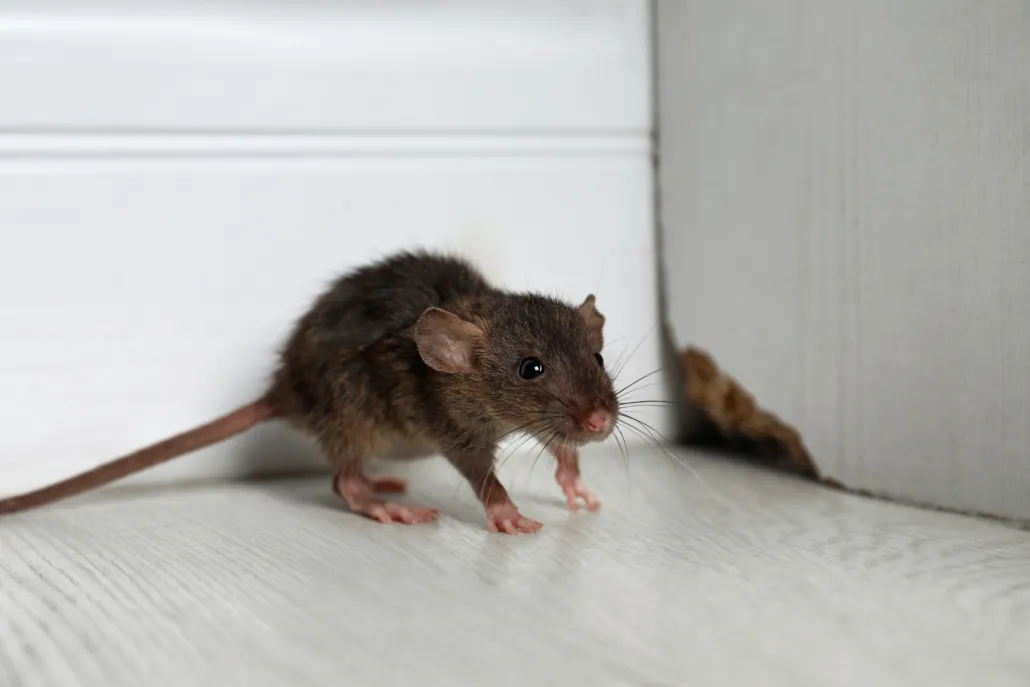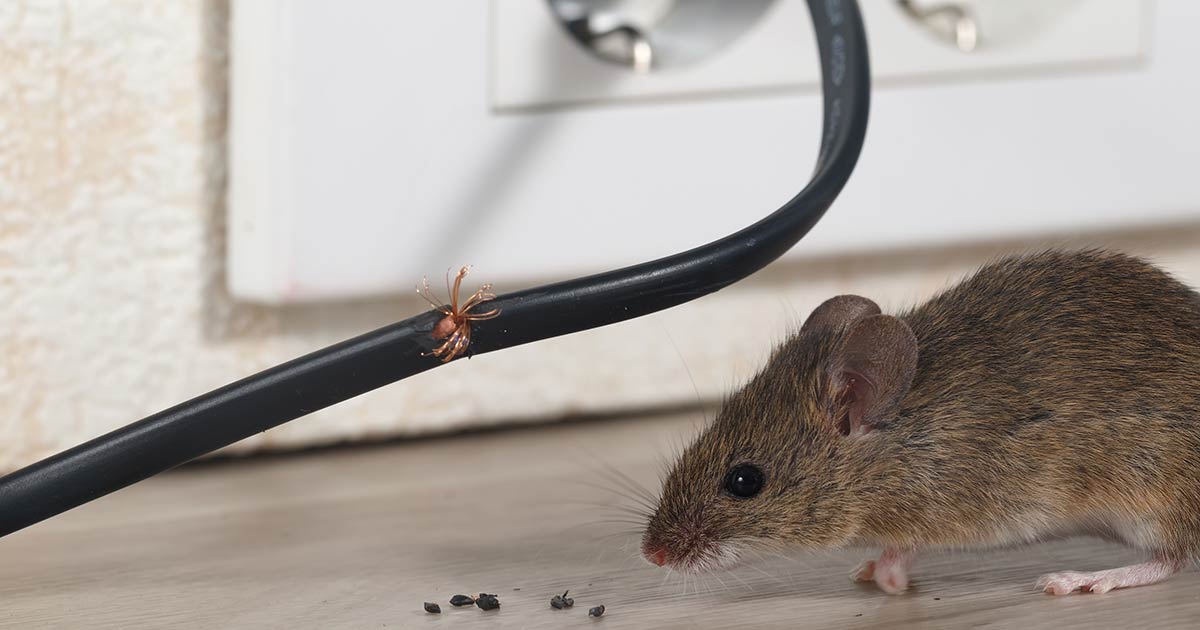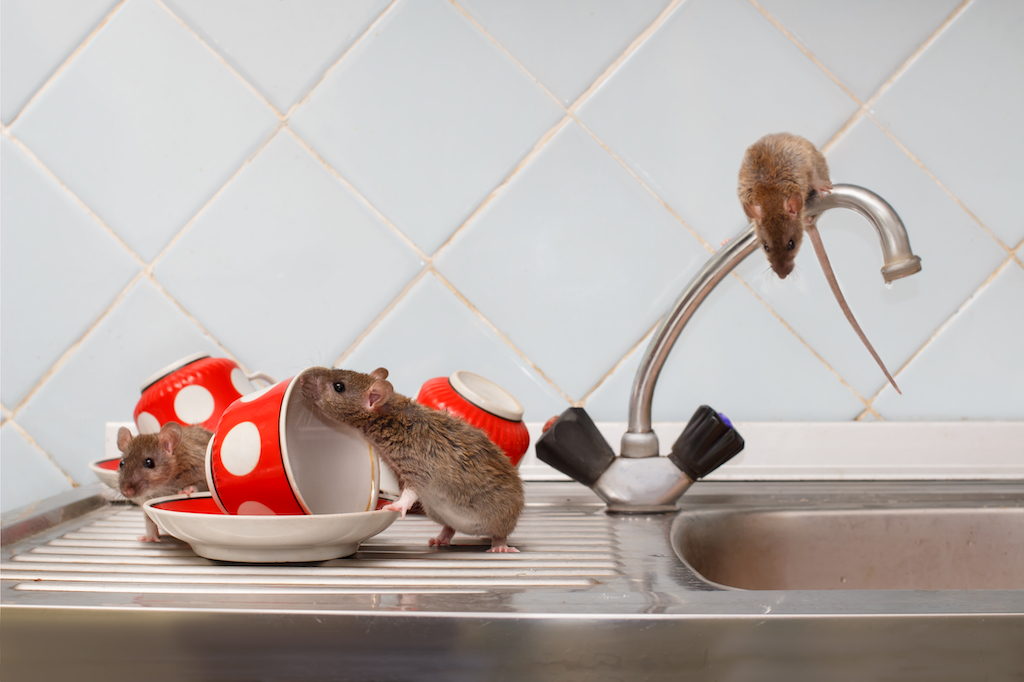Rodent Treatments in Florida
Providing Expert Solutions for Florida’s Most Persistent Pests
Florida’s subtropical climate—mild winters, consistent warmth, and regular humidity—attracts countless residents and visitors. Yet these conditions also favor rodents, ranging from mice to rats, which exploit accessible food, water, and hidden entry points. In Deltona, along with neighboring communities like DeLand, DeBary, Orange City, Eustis, and Lake Helen, ignoring early rodent warnings can escalate into a larger infestation that jeopardizes property cleanliness and occupant peace of mind. This service page details why rodents thrive in Florida, what signs hint at their presence, and why engaging a professional exterminator for rodent treatments remains a top strategy for preserving a comfortable home or commercial setting. By reacting promptly to squeaking within walls or gnaw marks on stored goods, you halt these pests before they undermine occupant well-being or cause structural damage.
Why Rodents Flourish in Florida

- Mild, Short Winters
In colder states, sub-freezing temperatures can naturally diminish rodent populations or curtail breeding for months. Florida’s winter seldom lingers at freezing, enabling mice and rats to remain fully active year-round. Indoors, stable air conditioning or heating keeps conditions near ideal for rodents, letting them feed and multiply unless occupant vigilance or professional solutions intervene. - High Humidity and Moisture
Rodents need reliable water sources to survive. Florida’s humidity, regular rainfall, and condensation around air-conditioning units frequently ensure moisture is within reach. If heavy rains flood outdoor burrows, rodents may migrate indoors through even small foundation openings or gaps around utility lines. Once inside, minor plumbing leaks or under-sink drips can sustain rodents for weeks or months. - Minimal Seasonal Dormancy
In many colder locales, rodents experience partial dormancy during brutal winters. Around Deltona’s mild climate, there’s no enforced seasonal break, so mice or rats can breed steadily if occupant or property manager efforts to check or block them slacken. A small infiltration often balloons rapidly, demonstrating the need for occupant or professional steps at the first clue. - Sufficient Food Availability
Mice and rats devour almost any organic matter. A busy household might leave crumbs or unsealed cereals, while unemptied trash bins can tempt rodents from outside. With Florida’s mild year-round weather, occupant habits rarely shift seasonally to hamper rodent feeding cycles, requiring occupant cleaning or structural adjustments to keep them in check. - Frequent Movement of People and Goods
Areas like DeLand or Orange City experience occupant transitions, short-term rentals, or secondhand product acquisitions. Rodents can hitch rides in shipping boxes, used furniture, or leftover supplies. Absent occupant checks—like thoroughly inspecting newly arriving items—mice or rats can remain undetected, nesting behind appliances or in wall cavities, quietly expanding.
Clues of a Rodent Infestation
- Droppings
Mice produce small, rice-shaped droppings, whereas rats yield larger, capsule-like pellets. Fresh droppings appear dark and slightly moist, turning grayish with age. Finding these in cupboards, drawers, or near food containers signals active rodent foraging. The presence of droppings near water lines or damp areas often confirms well-used rodent travel routes. - Nocturnal Scratching or Movement
Rodents typically venture out after dusk, searching for crumbs or water. Occupants may hear scratching, squeaking, or scurrying within walls or attics at night. Narrowing down the area of these noises guides occupant or professional detection of droppings, gnaw marks, or rodent nesting sites. - Gnaw Marks and Holes
Mice and rats must continuously chew to file their incisors, leaving ragged holes in cardboard boxes or bite marks on wooden edges or plastic bins. Chewed cereal bags or wiring could indicate a significant infestation, as rodents gnaw on items both for food and nesting materials. - Nests of Shredded Material
Rodents gather paper, cloth, or insulation to line their nests. Finding such shredded debris hidden in closets, behind major appliances, or in dim corners—often accompanied by droppings—strongly suggests active breeding. Removing nests swiftly is vital, yet occupant synergy with a full extermination approach is essential to eradicate the entire population. - Unusual Pet Fixation
Cats or dogs may behave oddly—sniffing or pawing at empty corners—if they smell or hear mice. Investigating these spots can confirm dropping clusters or small holes verifying rodent infiltration.

Consequences of Untreated Rodent Presence
- Health and Sanitation Concerns
Rodents spread bacteria, potentially contaminating surfaces or stored foods with droppings, urine, or fur. They might also bring fleas or ticks indoors, amplifying pest issues. Quick occupant or professional removal upholds occupant well-being, preventing foodborne illness or pest proliferation. - Structural and Wiring Damage
Mice or rats sometimes chew on wood beams, insulation, or electrical wires, risking fires if cables become exposed. Over time, hidden chewing can degrade structural integrity, requiring extensive repairs if occupant or manager detection arrives too late. - Rapid Reproduction
Rodents breed quickly, especially in Florida’s mild climate. A few mice can spawn multiple litters a year, swiftly overwhelming homes or commercial buildings if occupant or staff attempts remain half-done. Early occupant awareness—like noticing dropping clusters—thwarts expansions across multiple rooms or floors. - Daily Stress
Sharing a space with rodents fosters occupant anxiety over unexpected encounters or contamination near kitchen surfaces. Thorough eradication lifts occupant tension, letting families or employees focus on normal routines without scanning corners for scurrying shapes or droppings.
Why a Professional Exterminator Helps
- Complete Indoor-Outdoor Appraisal
A rodent exterminator systematically checks kitchens, basements, attics, or yard edges, finding droppings, gnaw marks, or nest debris. Determining species (mice vs. rats) shapes trap or bait station placement. This thoroughness ensures coverage of runways or hidden infiltration routes occupant alone might miss. - Strategic Trapping and Baiting
Over-the-counter solutions can scatter rodents deeper into walls if occupant usage is random. Experts place snap traps, multi-catch devices, or tamper-resistant bait stations where rodents feed or nest. This method destroys colonies behind walls or large appliances, sparing occupant or pet exposure to excessive chemicals. - Sealing Entry Points
Occupants or professionals must block dime-sized holes (mice) or quarter-sized gaps (rats) to keep new rodents from entering. Using caulk, steel wool, or door sweeps secures infiltration spots around pipes, foundation cracks, or window edges—cementing long-term success once present rodents are removed. - Sanitation and Occupant Training
Removing rodents is only effective if occupant housekeeping or dryness improvements remain consistent. Storing cereals in sealed containers, discarding leftover scraps, and addressing minor leaks hamper rodents from re-establishing. This occupant synergy solidifies stable, rodent-free conditions. - Follow-Up and Maintenance
Because rodents reproduce quickly, occupant re-checks or scheduled visits confirm no new litters remain. If occupant sightings (droppings, gnaw marks) persist, additional trap or bait station placements finalize occupant calm, blocking any hidden population from rebounding.

Typical Methods for Rodent Removal
- Inspection and Species Verification
Professionals observe droppings, chew patterns, or rub marks to identify whether occupant deals with house mice or larger rats. Each species calls for distinct trap sizes, bait preferences, or infiltration investigations. This precision tailors the approach for thorough coverage. - Snap Traps or Multi-Catch Devices
Snap traps placed flush along walls remain effective mechanical methods if occupant or staff empties them regularly. Multi-catch stations can handle multiple mice in heavy traffic zones. Rat infestations may warrant larger trap designs or locked bait stations. Properly set traps confine rodent movement to lethal areas. - Tamper-Resistant Bait Stations
For heavier infestations or hidden nest areas behind walls, rodenticide-laced stations can discreetly poison rodents. Because the toxins act gradually, rodents return to nests, sharing poison among their group. Exterminators place these stations out of occupant or pet reach, ensuring rodents have maximum exposure. - Exclusion Repairs
Occupants block identified holes with steel wool or metal flashing. Caulking foundation cracks or sealing door thresholds remains vital, preventing infiltration from yard edges. Without occupant or caretaker synergy sealing these gaps, new rodents swiftly replace those removed. - Organization and Debris Removal
Rodents exploit cluttered storage areas, leftover cardboard boxes, or piles of old newspapers for nesting. Occupants reorganizing basements or garages, discarding unneeded materials, or storing items in sealed bins hamper nest-building. Minimizing water sources—like promptly mopping spills—further destabilizes rodent survival.
Coverage for Deltona, DeLand, DeBary, Orange City, Eustis, Lake Helen
Deltona: A substantial residential hub often dealing with occupant transitions. Mice or rats can slip into new homes via moving boxes or leftover produce crates. Occupants noticing droppings near pantries should swiftly engage professional synergy to stop expansions spanning multiple floors.
DeLand: Featuring historic neighborhoods, DeLand might hide rodents in older structures’ cracks or seldom-visited nooks. Quick occupant detection—like hearing squeaks in walls—plus robust trap or bait usage hamper advanced infestations that otherwise overshadow occupant comfort.
DeBary: A suburban area near farmland edges. Mice might migrate indoors after heavy rains or if occupant housekeeping leaves leftover crumbs or open pet food. Occupant synergy—fixing leaks or sealing foundation lines—plus an integrated extermination plan ensures rodents cannot saturate multiple rooms.
Orange City: Known for occupant changes, secondhand commerce. Mice can sneak in used furniture or shipping cartons. Occupants verifying items for droppings or gnaw marks plus strategic roach or rodent solutions hamper infiltration. If occupant hears rustling at night, immediate occupant or professional action spares them deeper contamination.
Eustis: Scenic, lake-centered living fosters occasional wildlife crossing yards or rummaging in trash. Occupant synergy—like promptly discarding leftover scraps and sealing lids—plus properly placed traps or baits ensures mice remain outside if occupant dryness and housekeeping hold firm.
Lake Helen: A tranquil environment near mild waters. Mice can thrive indoors year-round if occupant or caretaker oversight fails to detect nibble marks or droppings behind stoves or in dim corners. Early occupant recognition and thorough extermination block potential expansions across large homes or multiple floors.
Why Our Rodent Treatments Shine
- Florida-Focused Approaches
With southwestern Florida’s mild winter rarely limiting rodent cycles, occupant synergy—like dryness measures, storing cereals in sealed bins—plus targeted traps or bait stations blocks near-constant breeding. This synergy addresses mice comprehensively, cornering them at each infiltration route. - Precision and Limited Disruption
We place baits or traps exactly where rodents nest or travel, minimizing occupant or pet chemical exposure. Occupants typically wait for dryness or recommended re-entry intervals if certain products require it, swiftly resuming daily routines while rodents face lethal coverage in crucial corners. - Emphasis on Exclusion and Housekeeping
Removing active rodents only solves half the problem. By guiding occupant-based sealing of cracks or reorganizing clutter, we ensure new mice cannot simply replace those eradicated. Combining occupant diligence with our proven removal methods cements a lasting rodent-free environment. - Ongoing Monitoring
Because mice multiply rapidly, occupant or scheduled re-checks confirm no hidden litters remain. If occupant sightings persist—like droppings in newly accessible spots—further trap or bait station placements finalize occupant peace, guaranteeing no hidden clusters remain in walls or attics.
Next Steps
Spot droppings near food storage, hear squeaks behind walls at night, or find chew marks on stored goods? Contact us to learn more or schedule your service. Our mice treatments in Deltona, DeLand, DeBary, Orange City, Eustis, and Lake Helen locate nesting spots, eliminate established colonies, and seal infiltration paths—eradicating hidden rodents thoroughly. By choosing a professional exterminator, occupant guesswork is minimized, ensuring stealthy mice behind appliances or inside wall voids also face lethal coverage.
Early occupant measures—like scanning behind stoves for droppings, vacuuming floors to remove crumbs, or sealing minor foundation cracks—thwart small infestations from exploding into multiple-room takeovers overshadowing occupant well-being. Through occupant housekeeping and advanced trap or bait station solutions, rodents lose safe nesting sites and easy meals. Freed from the frustration of droppings in drawers or nightly squeaks in ceilings, central Florida property owners fully embrace their mild climate and scenic communities, unburdened by the unseen presence of mice or rats rummaging behind walls.
